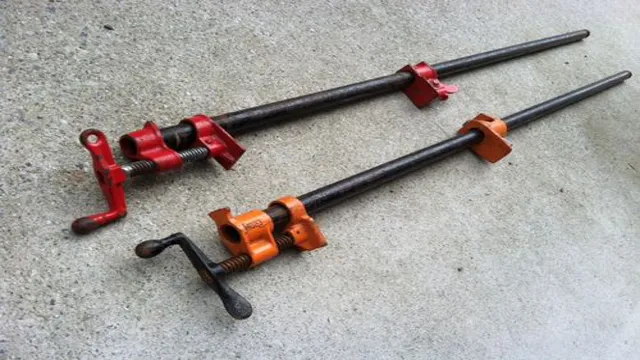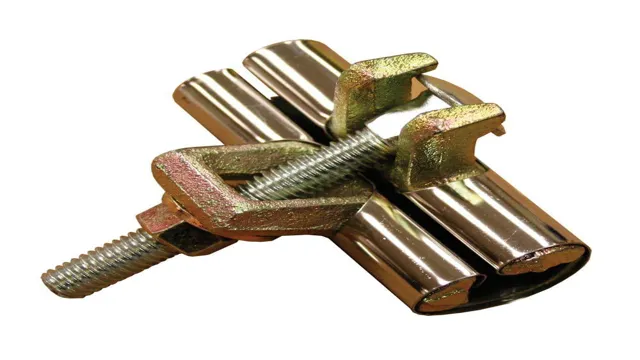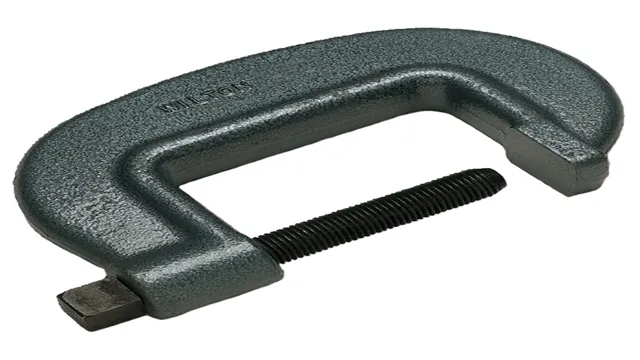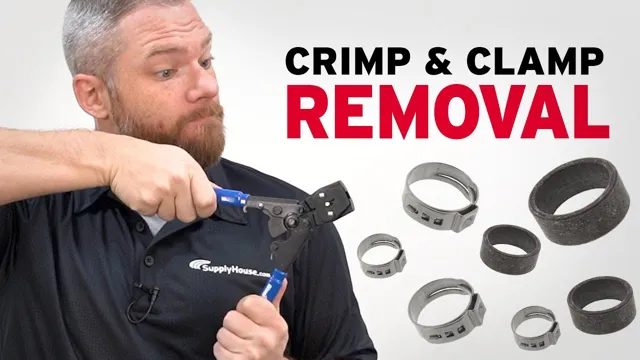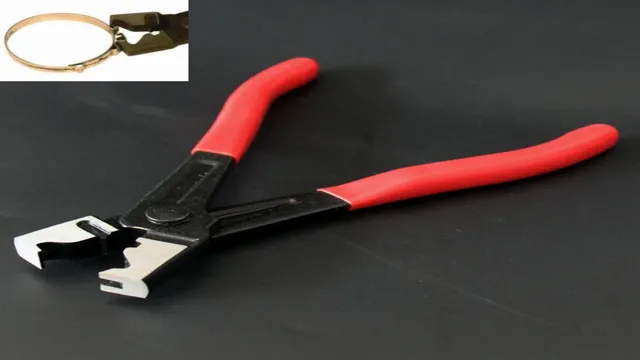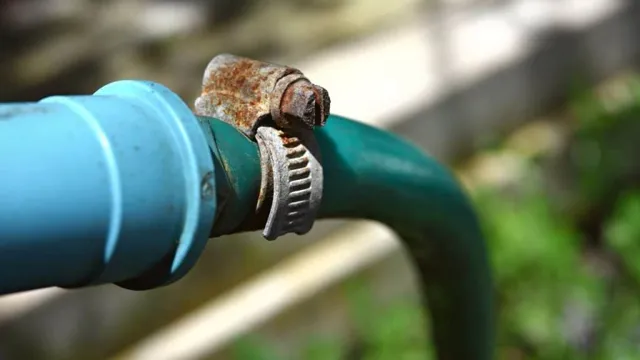Are Hose Clamps Measured by Diameter? Everything You Need to Know

Have you ever been tasked with finding the right hose clamp for a specific project, only to become overwhelmed with the numerous sizes and styles available? Don’t fret! Understanding the measurements of hose clamps can help you choose the perfect one for your specific application. Hose clamps come in a variety of widths and diameters, making it easy to find one to snugly fit around your hose and secure it in place. It’s essential to choose the right size to ensure the clamp’s effectiveness.
Think of it like finding the perfect belt to hold up your pants; if it’s too big or too small, it won’t work correctly. In this blog, we’ll dive into hose clamp measurements and their importance so that you can confidently choose the right clamp for your next project. So let’s get started!
Understanding Hose Clamps
When it comes to hose clamps, the question of whether they are measured by diameter often arises. The answer is yes, generally hose clamps are measured by the diameter of the hose they will be used on. This is because hose clamps are designed to fit tightly around the outside of the hose, sealing it and preventing any leaks.
Therefore, the diameter of the hose is essential in determining the right size of hose clamp. It is important to note that there are various types of hose clamps, each designed for different applications, and measuring methods may differ slightly depending on the type of clamp being used. It is always best to consult an expert or refer to the manufacturer’s guidelines when selecting the appropriate hose clamp.
So, next time you need to use a hose clamp, be sure to measure the diameter of your hose carefully to ensure a perfect fit!
What are Hose Clamps?
Hose clamps are essential items that help to secure hoses connecting different parts of a system together. They are used to regulate the flow of fluids or gases and to ensure that the connections remain tight and secure. Hose clamps come in different shapes and sizes to accommodate varying hose diameters, and they are made from different materials, including stainless steel and polypropylene.
They are easy to install and require no special tools, and they can be adjusted as needed. Properly installed hose clamps help to prevent leaks, damage to the hoses, and even accidents that can result from system failure. So, if you want to ensure that your system runs smoothly, then it’s important to use the right hose clamps, and to install them correctly.
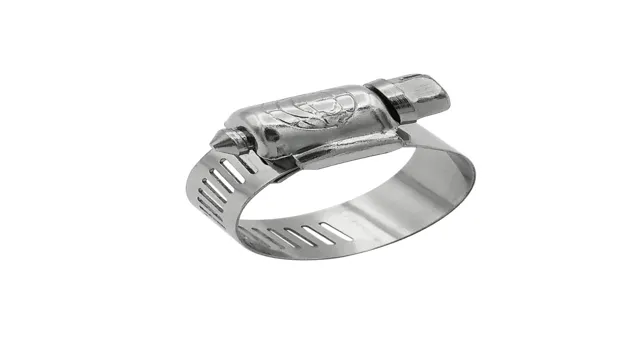
Why are They Used?
Hose clamps are used for various applications in industrial settings and automotive maintenance. They are used to secure hoses and pipes, making sure that they remain tightly connected and stable during operation. Hose clamps are a kind of mechanical fastener that facilitates the safe transfer of fluids and gases in both high and low-pressure environments.
One of the reasons why hose clamps are so popular is due to their flexibility, durability, and reliability. They can be used in almost any application that requires secure hose and pipe connections, such as cooling and heating systems, hydraulic systems, and fuel lines. Furthermore, hose clamps are highly cost-effective, making them a go-to choice for many engineers and maintenance personnel.
Measuring Hose Clamps
Yes, hose clamps are typically measured by their diameter. This measurement is important, as it determines how tightly the clamp will fit around the hose. It is essential to choose the correct size clamp for the specific hose being used to ensure a secure and leak-free connection.
To measure the diameter of your hose, you can use a tape measure or ruler to determine the distance across the widest part of the hose. Once you have this measurement, you can then select a hose clamp with a diameter range that matches your hose’s size. It’s always recommended to measure twice to ensure accuracy and prevent any mishaps.
Failure to properly measure and select the correct size hose clamp could result in leaks, damage to equipment, or even safety hazards. So, take the time to measure carefully and choose the right size clamp for your needs to ensure a successful and safe connection of your hoses.
Diameter Measurement
Measuring hose clamps can be a bit tricky, but with the right tools and techniques, anyone can do it like a pro. The diameter of the hose clamp is the most important measurement to take, as this will determine the size of the hose it will fit. To measure the diameter of a hose clamp, you will need a caliper or a ruler and a steady hand.
Place the clamp on a flat surface and use the caliper or ruler to measure the distance between the two points where the clamp meets. Make sure to measure across the widest part of the clamp to get an accurate measurement. If you don’t have a caliper or ruler, you can also use a piece of string or a flexible tape measure to wrap around the clamp and then measure its length.
Remember to subtract the thickness of the string or tape measure to get the true diameter. With these simple tips, you can easily measure your hose clamps and ensure you get the right fit every time.
Measuring Tools
Measuring hose clamps is crucial for ensuring that hoses are secure and leak-free. A hose clamp is a small but essential tool used to prevent the hose from detaching or leaking. This measuring tool comes in different sizes and materials, such as stainless steel, galvanized steel, or plastic.
To measure a hose clamp, you need to know its diameter and width. Measuring the diameter is easy because you need to measure the distance around the hose or tube that the clamp secures. However, measuring the width can be tricky because the width of the hose clamp must match the diameter of the hose.
Therefore, it’s vital to use a measuring hose clamp that allows you to measure both the hose clamp diameter and width. By using the right measuring tool, you can ensure that your hose clamp is the perfect fit for your hose, providing a secure and leak-free connection. So, next time you use a hose clamp, remember to measure it carefully to avoid any leaks or hose detachment.
Tips for Accurate Measurements
When it comes to measuring hose clamps, accuracy is crucial to ensure a tight and secure fit. To get an accurate measurement, you’ll need a few tools and specific techniques. First, use a caliper to measure the diameter of the hose you need to clamp.
For example, if the hose diameter measures 3/4 inches, choose a clamp with a diameter range of 3/4 inches. This will ensure a snug fit. Next, measure the width of the clamp itself, making sure it’s wide enough to cover the entire hose.
Finally, measure the space between the clamp’s screws to ensure it fits your particular installation location. It’s important to keep in mind that hose clamps come in different styles, such as screw clamps and bolt clamps, so make sure to measure properly according to the clamp type. By following these measuring tips, you’ll ensure you get the correct clamp size for your hose and achieve optimal performance for your system without leaks.
Types of Hose Clamps
Yes, hose clamps are often measured by diameter. This is because the size of the clamp needs to correspond with the size of the hose it is securing. There are several types of hose clamps, including worm gear clamps, t-bolt clamps, spring clamps, and wire clamps.
Worm gear clamps are some of the most common and versatile types of hose clamps, as they can be easily adjusted to fit a wide range of hose sizes with their screw-like mechanism. T-bolt clamps are typically used for heavier-duty applications, as they provide a tighter seal and can withstand higher pressure levels. Spring clamps are simple, cost-effective clamps that are easy to install, but may not provide the same level of security as other types of clamps.
Wire clamps are also a budget-friendly option, but may be prone to rusting over time. When choosing a hose clamp, it is important to consider the size and type of hose being used, as well as the specific requirements of the application.
Screw/Band Clamps
Screw/band clamps are commonly used types of hose clamps to secure and tighten hoses onto pipe fittings. These clamps utilize a screw mechanism or band to grip and hold the hose in place, providing a secure and leak-proof seal. One of the advantages of screw/band clamps is that they can be tightened or loosened as necessary, making them ideal for applications that require periodic adjustment or removal.
However, it’s important to note that these clamps may not be suitable for high-pressure applications and can cause damage to soft hoses if over-tightened. As with any type of hose clamp, it’s crucial to choose the appropriate size and material for the job to ensure optimal performance and safety. So, if you’re in need of a reliable hose clamp for your project, consider using a screw/band clamp for a secure and adjustable seal.
Spring Clamps
When it comes to securing hoses, spring clamps are a popular choice. These clamps utilize a spring-like mechanism that, when compressed, tightens around the hose and keeps it in place. There are many types of hose clamps available, including worm gear, T-bolt, and constant tension clamps.
Worm gear clamps are the most common and are typically made of stainless steel and feature a screw mechanism that tightens the clamp around the hose. T-bolt clamps are similar to worm gear clamps, but they feature a bolt and nut mechanism that provides a more secure hold. Finally, constant tension clamps use an extended spring mechanism that provides even pressure along the entire length of the hose.
No matter what type of hose clamp you use, it’s important to ensure that it is properly sized for your particular application and that it is tightened securely to prevent leaks or other damage. With the right hose clamp, you can be confident that your hoses will remain securely in place, even under the most extreme conditions.
Choosing the Right Hose Clamps
Yes, hose clamps are typically measured by diameter. It’s important to choose the correct size hose clamp to ensure a tight and secure fit around the hose you’re working with. Most hose clamps will have a range of sizes listed on the packaging or the clamp itself, so it’s important to measure the diameter of your hose to determine which size clamp you need.
When measuring your hose, be sure to account for any fittings or connectors that may affect the diameter. Choosing the wrong size hose clamp can result in leaks, kinks, or even damage to the hose itself, so taking the time to measure correctly can save you a lot of headaches in the long run.
Matching the Right Clamps with Hoses
When it comes to hoses and clamps, the right pairing can make all the difference in the world. Choosing the right hose clamp might seem like a simple task, but it can be a bit more complicated than you might think. The first thing you need to consider is the type of hose you are working with.
There are different sizes and materials used in hoses, and each one has its specific requirements when it comes to clamps. For instance, if you are dealing with a smaller hose, you’ll need a clamp that’s designed to fit that particular size. Similarly, if the hose is going to be exposed to pressure and heat, you’ll need a clamp that can withstand those conditions.
Additionally, you want to make sure that the clamp is easy to install and remove when needed. By taking these factors into account and choosing the right hose clamp, you can ensure that your hose operates efficiently and effectively.
Sizing and Material Considerations
When it comes to choosing the right hose clamps, there are a few things to consider. The first thing is size. It’s important to choose a clamp that matches the size and diameter of your hose.
If the clamp is too small, it may not create a tight enough seal, which could cause leaks. On the other hand, if the clamp is too big, it may be difficult to tighten properly, which could also cause leaks. Another consideration is material.
Hose clamps are typically made from stainless steel, but there are other options available as well, such as plastic and rubber. Stainless steel is the most durable and corrosion-resistant option, but plastic and rubber may be more suitable for certain applications. When choosing the right hose clamp, it’s important to consider the specific needs of your application and choose a clamp that meets those needs.
Conclusion
In short, yes, hose clamps are indeed measured by diameter. Just like a well-fitted suit or fan belt, the size of the clamp must match the size of the hose it’s intended to secure. So while the concept of measuring hose clamps may not be the most exciting topic, it’s certainly an integral part of any successful plumbing or automotive project.
After all, proper fitting equals proper function – and that’s something we can all appreciate.”
FAQs
How are hose clamps measured?
Hose clamps are generally measured by their diameter.
What unit of measurement is used for hose clamps?
Hose clamps are commonly measured in inches or millimeters.
Can hose clamps be adjusted?
Yes, hose clamps can typically be adjusted to accommodate different hose sizes.
What type of hose clamps are best for high-pressure applications?
Worm gear clamps are often recommended for high-pressure applications due to their secure and tight fit.
Are there different types of hose clamps?
Yes, there are several different types of hose clamps, including spring clamps, wire clamps, and T-bolt clamps.
How do you install a hose clamp?
To install a hose clamp, you typically slide it over the hose and tighten it until it is secure.
Can hose clamps rust?
Yes, hose clamps can rust if they are exposed to moisture or corrosive substances. It’s important to choose the appropriate material for your specific application.

